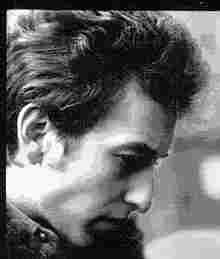When a farmworker called Jim Copper walked over the hills of Rottingdean, singing songs his father had taught him, about ploughboys, blacksmiths and jilted lovers - even when some prescience made him write them down against the laws of oral tradition - he couldn't have known that, in 1952, he would be singing with his family at the Albert Hall, repeating them in front of thousands. Or that through the years that followed, he, and many others like him, would bring them to millions more, across the airwaves.
Uileann pipers, like the delicate and urbane Seamus Ennis, had long been respected by their kind, but could have had no notion that their music would become an inspiration for a new generation, far beyond the flaidhs and fairs of rural Ireland.
The modal scales and ornaments of traditional music would seem to have no bearing on the mingling of blues, rock and orchestral sounds that most of us associate with the music of the time. But just before the last generation of traditional singers and players disappeared into oblivion there was a movement to record and annotate their work, which not only meant it was preserved, but that it began to spread as a living force. And once that rich seam of melody and narrative was mined, and the tones of fiddles, tin whistles, flutes, banjos and pipes seared through the collective unconscious, an unspoken realisation occurred: this was the music of these islands, our music, and it was ripe for rediscovery.
 By the mid-sixties this had become known as the Folk Revival. As with so many religious enthusiasms of profound and widespread influence, its conspicuous adherents were relatively few. But it was certainly no sideshow. Towns and villages everywhere spawned folk clubs where the music flourished, and where there was a real sense of conviction that what was played there had an integrity and a mythical content denied its more spectacular counterparts. It fostered any number of contemporary writers, who used traditional forms for their ballads and adapted accompanying instruments to suit the style Most of them never rose above obscurity, but their work has been copied and adapted, so that they in turn have become part of a living tradition To be in one of those animated, smokefilled rooms above a pub was to be part of a community with a vibrant language and a fully developed sense of politics - along with a unique sense of humour, which in itself produced performers whose comedy was more vital than their singing, and whose recognition came ultimately in that way.
By the mid-sixties this had become known as the Folk Revival. As with so many religious enthusiasms of profound and widespread influence, its conspicuous adherents were relatively few. But it was certainly no sideshow. Towns and villages everywhere spawned folk clubs where the music flourished, and where there was a real sense of conviction that what was played there had an integrity and a mythical content denied its more spectacular counterparts. It fostered any number of contemporary writers, who used traditional forms for their ballads and adapted accompanying instruments to suit the style Most of them never rose above obscurity, but their work has been copied and adapted, so that they in turn have become part of a living tradition To be in one of those animated, smokefilled rooms above a pub was to be part of a community with a vibrant language and a fully developed sense of politics - along with a unique sense of humour, which in itself produced performers whose comedy was more vital than their singing, and whose recognition came ultimately in that way.But, like the Tull experience, that wasn't where the true importance lay. Nor in the obvious mainstream nods towards the music from the likes of Thin Lizzie or East Of Eden. It was in the sense of what it was about, and where it was rooted, that spread through the culture, and re-emerged as a new point of focus. When Bob Dylan began to match his original and inspired urban lyrics with traditional melodies, or when Paul Simon recorded Scarborough Fair over a newscast about Vietnam, it was clear how far the influence had spread. These poets had become voices of a new English-speaking generation, and rising from the vast cultural landscape of the States, while they delved inevitably into their own native material, from blues to country, they found their main drive in songs like those Jim Copper had by now passed onto his son, with ornamentation traceable to players like Seamus Ennis.